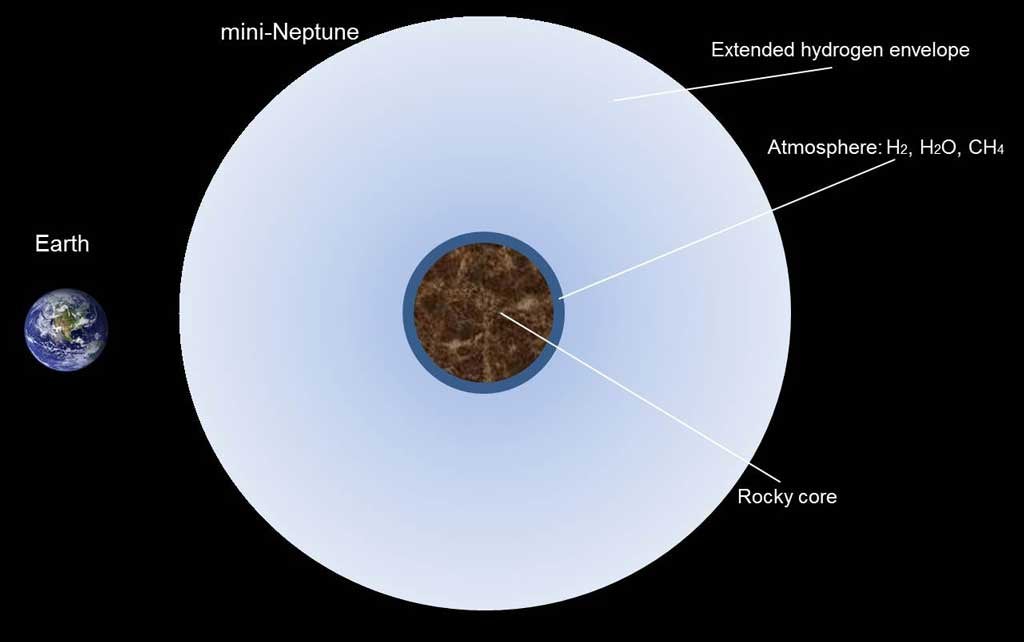Super-Earths are emerging as a common type of exoplanet. They have masses and radii larger than the Earth’s but smaller than those of the ice giants in our solar system, such as Uranus or Neptune. Whether super-Earths are more like a “large Earth” or a “small Uranus” is unknown because scientists have yet to determine their detailed properties.
To learn more about Super-Earths’ similarities to planets in our solar system, astronomers focused on investigating the atmospheric features GJ 1214 b, which is located 40 light-years from Earth in the constellation Ophiuchus, northwest of the center of the Milky Way. This planet is one of the well-known super-Earths discovered in the MEarth Project, whose scientists search for habitable planets around nearby small stars. The team examined features of light scattering during GJ 1214 b’s transit across its star.
Current theory posits that a planet develops in a disk of dense gas surrounding a newly formed star (a protoplanetary disk). Hydrogen is a major component of a protoplanetary disk, and water ice is abundant in the outer regions. Previous studies have focused on where super-Earths have formed and how they have migrated to their current orbits. If scientists can actually observe the major atmospheric components of a super-Earth, they can then infer the planet’s birthplace and formation history.
Planetary transits enable scientists to investigate changes in the wavelength in the brightness of the star, which indicate the planet’s atmospheric composition. Strong Rayleigh scattering in the optical wavelengths is powerful evidence for a hydrogen-dominated atmosphere. Rayleigh scattering occurs when light particles scatter in a medium without a change in wavelength. Such an effect strongly depends on wavelength and enhances short wavelengths, causing a greater change in blue, rather than red, photons.
The current team used the two optical cameras on the Subaru Telescope fitted with blue transmission filters to search for the Rayleigh scattering feature of GJ 1214 b’s atmosphere. This host star’s faintness in blue light poses a challenge for researchers seeking to determine the extent of Rayleigh scattering in the planet’s atmosphere.
The powerful light-collecting 27-foot (8.2 meters) mirror of the Subaru Telescope allowed the team to achieve the highest-ever sensitivity in the bluest region. Their observations showed that GJ 1214 b’s atmosphere does not display strong Rayleigh scattering, implying that the planet has a water-rich or a hydrogen-dominated atmosphere with extensive clouds.
Although the team did not completely discount the possibility of a hydrogen-dominated atmosphere, the new result combined with findings from previous research in other colors suggest that GJ 1214 b’s upper layers are more likely to be water-rich.
Although there are only a small number of super-Earths that scientists can observe now, this situation will change dramatically when the Transiting Exoplanet Survey Satellite (TESS) begins its whole-sky survey of small transiting exoplanets in our solar neighborhood. When new targets become available, scientists can study the atmospheres of many super-Earths with the Subaru Telescope and next-generation telescopes such as the Thirty Meter Telescope (TMT).










